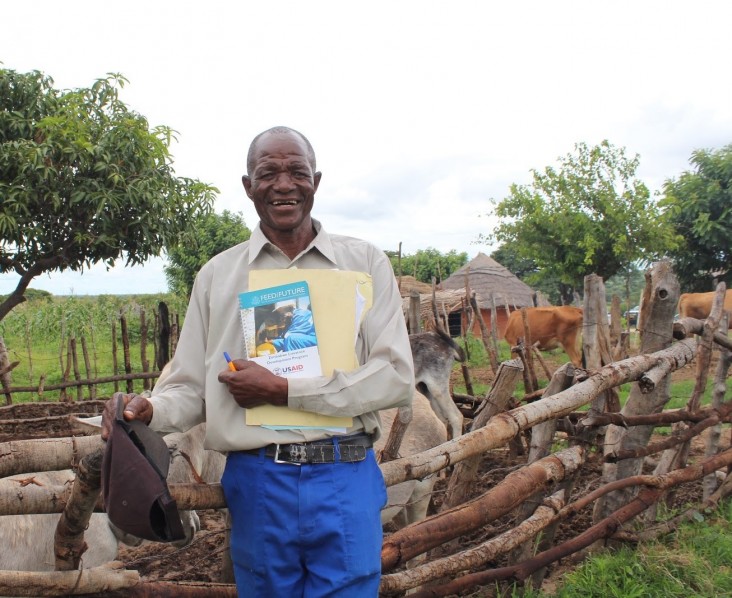Press Release Shim
Speeches Shim

For Immediate Release
The U.S. Agency for International Development (USAID), and partner Fintrac, marked the successful completion of the five-year Feed the Future Livestock Development program at a virtual event on September 16, 2020 under the theme: Celebrating Commercialization of Smallholder Beef and Dairy Production.
Since 2015, USAID’s Feed the Future Zimbabwe Livestock Development program assisted more than 13,000 smallholder farmers across six districts by creating economic opportunities that increased their incomes on average by 353 percent, from US$297 to US$1,345 per annum per household.
Speaking at the virtual event, USAID’s Mission Director Art Brown said, “Feed the Future aims to transform lives by addressing the root causes of poverty, hunger, and malnutrition. I’m very proud to say that the Feed the Future Zimbabwe Livestock Development program helped drastically reduce the proportion of beneficiaries living below the poverty line.”
The Feed the Future Livestock Development program’s market-driven approach in close collaboration with input suppliers, service providers, and buyers, stimulated demand and increased competition for smallholder-produced beef and dairy products. Of the program’s beneficiaries, more than 2,300 farmers entered the large-scale dairy industry. Seventeen village milk aggregators from five districts now regularly supply dairy processors such as Dendairy and Dairibord Zimbabwe Limited.
Through the program’s training and technical assistance in good agriculture and animal husbandry practices, beef and dairy farmers were given opportunities to sustainably increase their productivity, which enhanced their food security, incomes, nutrition, and hygiene, and built resilience to climate change and drought. In addition, the program focused on increasing women’s participation in livestock activities and, as a result, nearly half of the program’s beneficiaries were women.
Feed the Future Livestock Development farmers invested more than US$3.8 million of their own resources into productive assets, including improved cattle breeds, artificial insemination, farm machinery and infrastructure, cold chain facilities, and boreholes.
At the virtual event, USAID and Fintrac shared reflections on the program’s achievements and challenges over the past five years to an audience of farmers, private companies, government stakeholders, development and research organizations, NGOs, and other financiers, both in and out of Zimbabwe.
USAID Mission Director Art Brown, Ministry of Lands, Agriculture, Water, and Rural Resettlement staff, and provincial and district leadership who have been instrumental in implementing the program, also attended the virtual event.
USAID continues to build on the success of Feed the Future Livestock Development program through Fostering Agribusiness for Resilient Markets (FARM)--a US$19.8 million, five-year program, which targets 20,000 households in Manicaland and Masvingo provinces and provides innovative technical training and assistance to smallholder farmers.
Over the past 30 years, the United States has invested nearly $3.2 billion in Zimbabwe through initiatives to increase food security, support economic resilience, improve health outcomes, and promote democratic governance.
###
For additional information, please contact Information Officer John Hishmeh at HararePAS@state.gov, Development Outreach and Communications Specialist Doreen Hove at dhove@usaid.gov, or Emeldah Takaona at emusevenzo@fintrac.com, Senior Communications Specialist at Fintrac

Comment
Make a general inquiry or suggest an improvement.